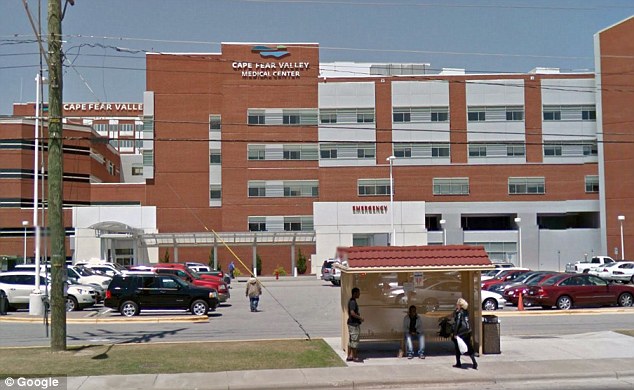Phyllis Mason, of North Carolina, is believed to be the sixth victim in the U.S. to be killed by the rare bacterial skin infection called necrotizing faciitis this year.
The 75-year-old was recovering from a pelvic fracture when she contracted the aggressive disease at the end of August.

Doctors believe that Mason contracted the disease from an open sore on her tailbone which she suffered after sitting down so much during her recovery from the fracture.
The disease is typically contracted by people with a weakened immune system and can spread quickly through the victim's body.
The first warning sign of the disease came on August 31 when Mason felt a burning sensation in her right leg. Becoming worried she texted her son, reported the Fay Observer.
The following day, on September 1, Carl Mason checked on his mother and her leg looked fine.
On August 3, Carl Mason returned to check on his mother after she texted him the previous day saying that her leg was now a little swollen and painful.
When his mother didn't answer the door, Mason broke in and discovered her lying on the floor, still breathing but with a severely bruised leg.
Doctors first suspected gangrene but then confirmed that the 75-year-old was suffering from necrotizing fasciitis.

Because bacteria was still ravaging Mason's body after she died, medical professionals, friends and family had to take precautionary measures against contracting the disease. At her funeral, mourners were kept three foot from the open casket, the paper reported.
Carl Mason told the FayObserver that his mother loved reading to her two-year-old granddaughter and was determined to recover from her fracture.
Earlier this month, Robert Turner, a 32-year-old convicted murderer died from necrotizing fasciitis while he was still serving time in a Chicago prison.
Last month Anthony Hills, 55, from Charleston, died from the aggressive infection and in July seven-year-old Tevita Alatini from Texas was also killed from the condition.
Linda Snyder, a pastor from Sacramento, California, lost her life in June after being infected as did Michigan woman Crystal Spencer, 33.
In May, new mother, Lana Kuykendall, contracted necrotizing fasciitis in a hospital in upstate South Carolina, just after delivering her twin babies.
She underwent 20 surgical procedures to stop the aggressive bacteria spreading but managed to avoid having any limbs amputated.
Earlier in the year the same disease savagely struck Georgia student Aimee Copeland forcing surgeons to amputate all four of her limbs to save her life.
In total at least six Americans have now died from the infection and another eight victims have had limbs amputated.
NECROTIZING FASCIITIS: THE DEADLY FLESH-EATING BACTERIA
Necrotizing fasciitis, more commonly known as 'flesh-eating disease', is a rare but extremely vicious bacterial infection. 'Necrotizing' refers to something that causes body tissue to die, and the infection can destroy skin, muscles and fat.
The disease develops when the bacteria enters the body, often through a minor cut or scrape. As the bacteria multiply, they release toxins that kill tissue and cut off blood flow to the area.
Because it is so virulent, the bacteria spreads rapidly throughout the body.
Symptoms include small, red lumps or bumps on the skin, rapidly-spreading bruising, sweating, chills, fever and nausea. Organ failure and shock are also common complications.
Sufferers must be treated immediately to prevent death, and are usually given powerful antibiotics and surgery to remove dead tissue. Amputation can become necessary if the disease spreads through an arm or leg.
Patients may undergo skin grafts after the infection has cleared up, to help the healing process or for aesthetic reasons.



Reader Comments
to our Newsletter